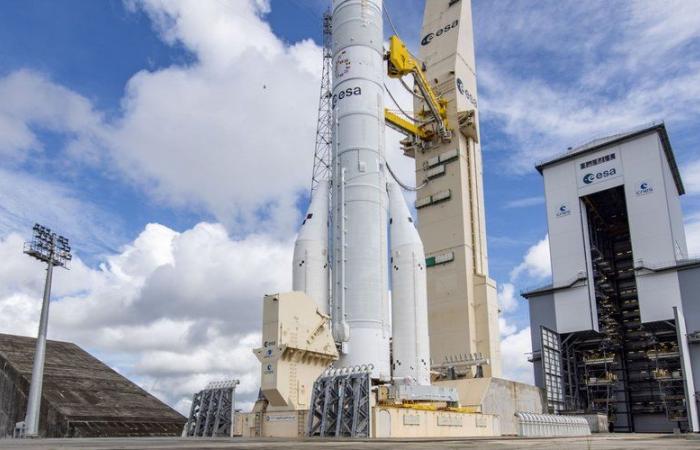
the essential
One year after saying goodbye to Ariane 5, the European Space Agency (ESA) will launch its big sister, the Ariane 6 rocket, on July 9. The launch window is scheduled. This is how the mission should unfold.
New European rocket due to take off this Tuesday July 9, 2024 from the Kourou space center in French Guiana. The launch window has been announced. Ariane 6 is scheduled to take off, unless otherwise ordered, between 8 p.m. and 11 p.m., French time. The new Ariane 6 heavy launcher is available in two versions: the Ariane 62 is equipped with two boosters and the Ariane 64 with four boosters. For this first launch, the “smallest” version was chosen. It still measures 56 meters high and weighs 530 tonnes.
How will the mission unfold?
If all goes well, the mission should last a little over 2 hours and 50 minutes. Here are the main steps. 7 seconds before the end of the countdown, the teams of the European Space Agency (ESA) will proceed to themain engine ignition, a Vulcain liquid hydrogen and oxygen engine. At hour H, the two boosters will in turn light up and burn their 142 tons of powder, each, for 2 minutes and 15 seconds then separate from the main floor. After 7 minutes and 35 seconds of pushing, the Vulcan engine will be turned off.
ESA
Six seconds later, the first floor separation. 9 seconds later, the Vinci engine of the upper stage will be turned on for about ten minutes. It will be a second time, 38 minutes later, for about twenty seconds. 1 hour and 6 minutes after takeoff, the headdress will open and will release its payloads in several installments. This operation will take a total of 1 hour and 45 minutes.
What will this first mission be used for?
This first flight will allow ESA to ensure that Ariane 6 is operational, in particular that the Vinci engine of the upper stage is capable of restarting several times. It will also allowsend eleven payloads during this first missionThese are mainly small CubeSats that are the size of a shoebox, microsatellites that do not exceed 150 kg, and two space capsules.
ESA
What are the risks ?
As with any first launch, the risks are very real. “Statistically, there is a 47% chance that the first flight will not be successful or does not go exactly as planned” is what Josef Aschbacher, Director General of the European Space Agency (ESA), recalled last April. “We will do everything possible to make this flight a success, but I think that this is something that we must keep in mind.” We remember that the first launch of Ariane 5, on June 4, 1996, ended in failure. The rocket had exploded in flight just 36 seconds after takeoff. Let’s hope that this will not be the case on July 9.





